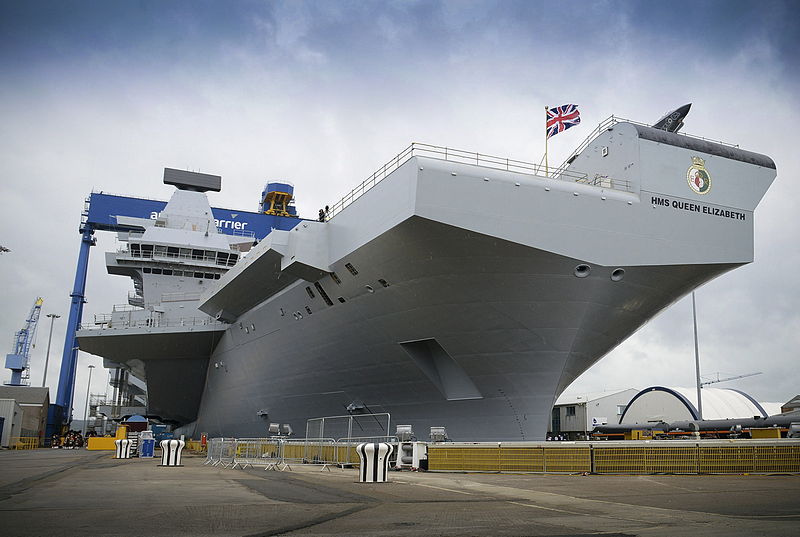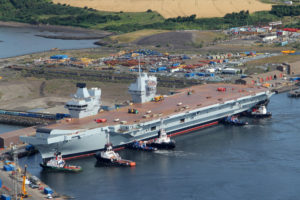Mega-Projects
The BBC bring us up-to-date with the progress on the new Royal Navy aircraft carriers (story link) however, opinions are divided on the role of these 2 new Royal Navy aircraft carriers which are currently nearing completion. so are these Technological Mega-Projects or White Elephants?
Queen Elizabeth Class
I say ‘nearing completion’ as the Queen Elizabeth Class project started initial studies in 1999, with contracts announced in 2007, awarded in 2008, first steel cut in 2009, naming and launch in 2014, with helicopter trials scheduled for 2017, and air operations for 2018. The Prince of Wales is expected to be commissioned by 2023.
The Royal Navy has been without any aircraft carriers since 2010, since the Ark Royal was decommissioned, and HMS Illustrious remained as a helicopter carrier until 2014, and is now being sold for scrap after 32 years of service.
UK Wide Effort
Being completed at Rosyth, the new aircraft carriers are actually assembled from parts manufactured all around the UK (Portsmouth, Devon, Glasgow, Liverpool and Newcastle). The finished ships will have 9 decks below the flight deck and be around 70,000 tonnes and 280 m long compared to the Invincible class carriers that they replace which were 22,000 tonnes and 209 m long. Despite being nearly 3 times the size, the crew for the new carriers is about the same at 700 crew (with room for 1,600 including commandos and marines), indicating the degree of automation, mechanical handling and computerisation designed into the project.
Construction Costs
The design and construction of these carriers certainly comes into the classification of mega-projects. With over 10,000 people involved and over 200 main suppliers, the costs (initially in 2007 of £3.5 billion) are now in the region of £6.2 billion. The size of individual contracts is enough to keep many companies busy for several years – the steel contract alone was worth £65 million to Corus. “The Engineer” magazine describe the project as “One of the most challenging projects in the UK”.
On the plus side, the project shows UK abilities to manage such mega-projects and construct the Royal Navy’s largest ships, using the latest technologies such as 3-Dimensional Computer Aided Design Virtual Mock-ups. Other advancements include the use of hand-held route finding logic tracking/mapping devices for construction workers deep inside a 3,000 compartment vessel with no windows.
On the down side, several commentators bemoan the fact that the carriers may not actually have enough aircraft to justify their size, the fact that they are not nuclear-powered and will be limited both in speed and range (25 knots and to a 10,000 range and therefore tied to oil supply ships). Another concern is the lack of submarine and support ships to protect such large and obvious warships. The Prince of Wales was in fact doomed to be cancelled until it was discovered that it would be cheaper to complete the project rather than pay penalty clauses.
Whatever your thoughts about the need for such warships, a great example of risk management is shown in the video with the inclusion of World War 2 style wind-up telephone alongside the modern computer communication systems. Sometimes “keep-it-simple” is the way to go!
If you’ve enjoyed this blog post, then please share it using the icons below. Thank you!



